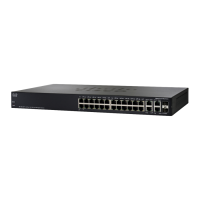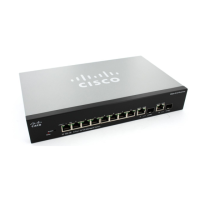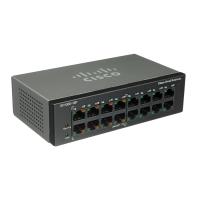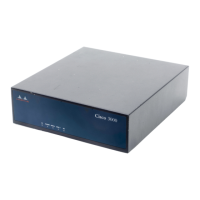SNMP
Managing SNMP Users
531 Cisco Small Business 200, 300 and 500 Series Managed Switch Administration Guide (Internal Version)
26
Managing SNMP Users
An SNMP user is defined by the login credentials (username, passwords, and
authentication method) and by the context and scope in which it operates by
association with a group and an Engine ID.
The configured user have the attributes of its group, having the access privileges
configured within the associated view.
Groups enable network managers to assign access rights to a group of users
instead of to a single user.
A user can only belong to a single group.
To create an SNMPv3 user, the following must first exist:
• An engine ID must first be configured on the device. This is done in the
Engine ID page.
• An SNMPv3 group must be available. An SNMPv3 group is defined in the
Groups page.
To display SNMP users and define new ones:
STEP 1 Click SNMP > Users.
This page contains existing users.
STEP 2 Click Add.
This page provides information for assigning SNMP access control privileges to
SNMP users.
STEP 3 Enter the parameters.
• User Name—Enter a name for the user.
• Engine ID—Select either the local or remote SNMP entity to which the user
is connected. Changing or removing the local SNMP Engine ID deletes the
SNMPv3 User Database. To receive inform messages and request
information, you must define both a local and remote user.
- Local—User is connected to the local device.
- Remote IP Address—User is connected to a different SNMP entity
besides the local device. If the remote Engine ID is defined, remote
devices receive inform messages, but cannot make requests for
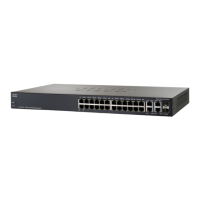
